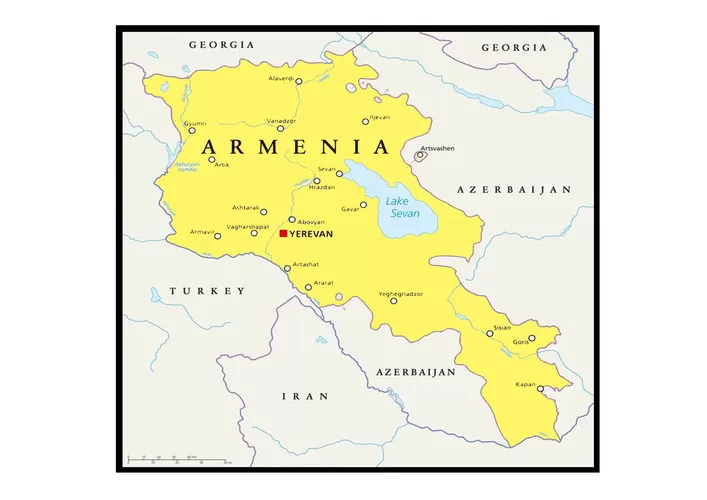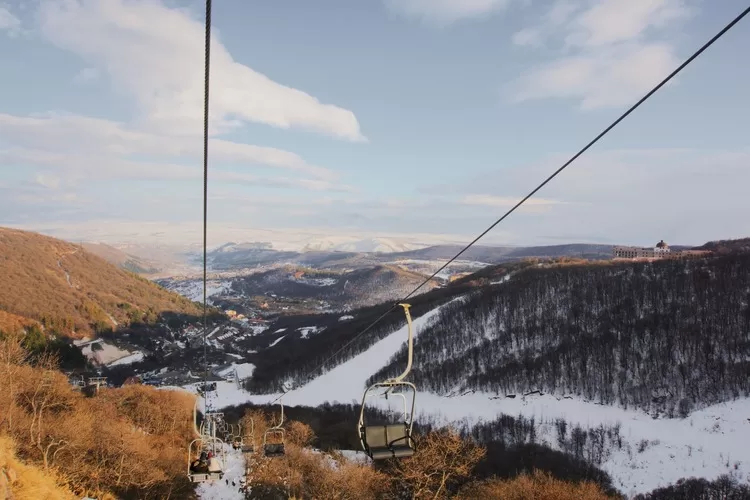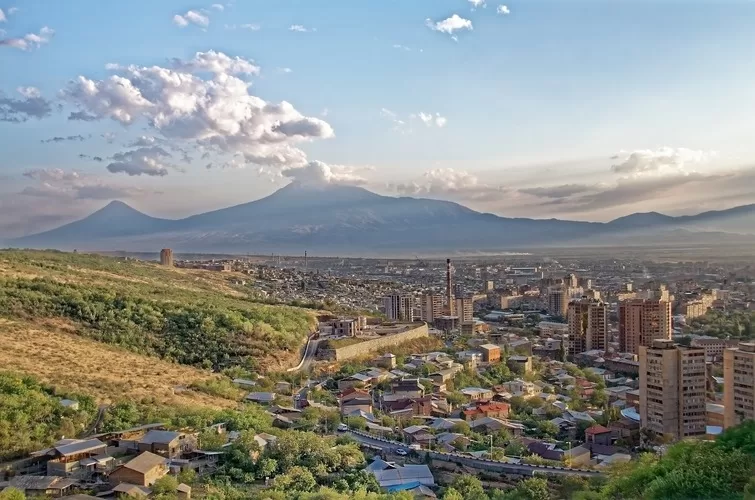Armenia, tucked in at the intersection of history, culture, and natural beauty, is a nation with a rich tapestry woven from millennia of fascinating history. Treasure hunters are invited to the South Caucasus, where old and contemporary marvels coexist in this hidden jewel. Armenia’s rich history of more than three millennia provides a firm basis for the country’s dynamic present, which welcomes visitors with a diverse array of experiences that are sure to make a lasting impression.
Armenia’s importance is woven into the fabric of global civilization, from being the first country to accept Christianity as the official religion in 301 AD to having an alphabet with a compelling script that has retained its language and culture. Visitors to this stunning country will find that it not only remembers its tragedies but also celebrates its triumphs through colorful festivals, friendly locals, and a delectable culinary tradition, all set against a backdrop of rugged mountains, placid lakes, and valleys steeped in history.
As we set out to discover the top 10 facts about Armenia which set apart, we will uncover a story in which the remnants of long-ago civilizations can be felt in the form of architectural marvels, where modernity embraces tradition and vice versa, and where the relationship between the old and the new is a constant tango. Armenia is shown to be more than a mere vacation spot; rather, it is a voyage into a world where history comes to life, the present is full of energy, and the future is being molded by an unshakable will, all of which are testaments to the perseverance of the human spirit over the ages.
Land Area: 29,743 km2
Official language: Armenian
Currency: Armenian Dram
Population: 2,777,970 (2023)
Capital: Yerevan
Table of Contents
Facts about Armenia’s History and Geography
History of Armenia
- Armenia is one of the world’s oldest nations, with a history stretching back over 3,000 years.
- Around the 9th century B.C., the Urartian Kingdom was at its peak, producing both monumental fortresses and illustrious inscriptions.
- In 301 A.D., under the leadership of King Tiridates III and St. Gregory the Illuminator, Armenia became the first nation to officially recognize Christianity as the state religion.
- There were periods of Persian and Byzantine rule over Armenia that shaped the country’s geopolitical environment throughout the ages.
- Arab Caliphates: From the 7th to the 9th century, a series of Arab caliphates controlled Armenia, bringing about significant changes in society and politics.
- In the 9th century, the Bagratuni dynasty founded a powerful Armenian empire that would become famous for its artistic and scientific accomplishments.
- Political unrest in Armenia may be traced back to the country’s invasions by the Seljuk Turks and the Mongols.
- By the 16th century, Armenia was a part of the Ottoman Empire, where it saw both periods of prosperity and persecution, concluding in the Armenian Genocide of 1915.
- Increased Russian influence over Armenia occurred throughout the 19th century as a result of Russian imperial expansion into Armenian territory.
- In 1918, as the Ottoman Empire was crumbling, Armenia proclaimed independence and founded the First Republic.
- Years of Soviet governance and industrialization followed after Armenia’s incorporation into the Soviet Union in 1920.
- Armenia earned its independence after the Soviet Union’s fall in 1991, but it has since been beset by economic difficulties and political upheaval.
- There was fighting between Armenia and Azerbaijan over the Nagorno-Karabakh territory until a truce was signed in 1994.
- Armenia has ongoing political and economic problems, but the country has managed to preserve its rich cultural traditions.
Geographical Facts of Armenia

- Armenia can only be reached by land and is part of the South Caucasus area of Eurasia.
- Armenia is bordered on the west by Turkey, the north by Georgia, the east by Azerbaijan, and the south by Iran.
- Yerevan, Armenia’s capital, has been continuously inhabited for more than 7,000 years, making it one of the world’s oldest cities.
- Mountains, plateaus, and valleys are just some of the geographical features that set Armenia apart.
- Mount Ararat is a cultural icon for Armenians even though it lies beyond the country’s boundaries and can be seen from a great distance.
- Lake Sevan: Lake Sevan is a major geographic feature of Armenia. It is one of the world’s biggest freshwater high-altitude lakes.
- The Aras River forms a section of the boundary between Armenia, Turkey, and Iran.
- Mount Aragats, the highest point in Armenia, is located in a mountain range that rises from the plains along the country’s border with Turkey.
- Agriculture plays an important role in the economy of the Ararat Plain, which is located between the Ararat and Aragats mountain ranges.
- Armenia has a continental climate, with hot summers and chilly winters, and an alpine climate in the country’s mountainous regions.
The Top 10 most interesting facts about Armenia are listed below.
01. First country to adopt Christianity
The fact that Armenia was the first country to adopt Christianity as its guiding light gives the country a unique and bright position in history. King Tiridates III of Armenia elevated the nation’s destiny by making Christianity the official state religion in the year 301 AD, against the background of a rapidly evolving globe. Decades before the Roman Empire was converted, Armenia made a momentous choice that would have far-reaching effects on the country’s spiritual, cultural, and social landscape for centuries to come.
An important turning point occurred when Saint Gregory the Illuminator baptized King Tiridates III, imbuing the country with the Christian values of love, acceptance, and optimism. This pivotal moment not only altered the course of Armenia’s history but also echoed across oceans, sparking a religious revival that is still going strong today. Armenia’s pioneering action has eternal importance, reinforcing the country’s position as an example of loyalty and resiliency.
02. Armenia has its own alphabet

Armenia, a country whose history can be felt in the very letters, has a unique distinction: it has its own alphabet. Scholar Mesrop Mashtots, in a flash of indelible brilliance in the fifth century, created an alphabet that is more than just a set of letters; it is a tangible representation of a people’s history, values, and traditions. The Armenian alphabet is a stunning example of human creativity due to its complex symbols and phonetic accuracy.
It not only helped Armenia maintain its own linguistic identity within the fabric of human languages, but it also facilitated the translation and preservation of religious texts, literature, and knowledge. Like a masterwork of art, this graceful harmony of curves and lines forms the thoughts, words, and ambitions of a country, representing the steadfast character of Armenia’s history and the basis for its promising future.
03. Armenia has a record-breaking cable car

Armenia, a country adorned with natural wonders, has etched its name into the annals of engineering marvels with a record-breaking achievement: the Wings of Tatev cable car, The longest reversible cableway in the world (5752 m), recorded in the Guinness Book of Records, and Winner of world’s leading cable car award according to World travel award 2021. Crossing the magnificent Vorotan Gorge, this cable car has the distinction of being the longest continuous double-track cable car in the world.
As it soars over the untamed landscapes, guests are given breathtaking views that reveal the unspoiled grandeur of the Syunik area in all its raw glory. The Wings of Tatev cable car not only links the town of Halidzor to the Tatev Monastery, a UNESCO World Heritage Site, but it also unites the past and the present, bringing together the fervor of long-held customs and the boldness of cutting-edge technology. Armenia’s unwavering dedication to growth is represented by this towering monument to human determination, which also serves as a symbol of the country’s unwavering embrace of its rich heritage and unsurpassed natural beauty.
04. Yerevan is one of the world’s oldest cities.

Yerevan, the capital of Armenia, is one of the world’s oldest cities and a living witness to the passage of millennia, which has enfolded it in its embrace. Yerevan has a history that goes back many centuries, and its roots may be traced all the way through the pages of human civilization. Warm with the light of antiquity, its cobblestone lanes testify to the passing of empires, the mingling of cultures, and the perseverance of a people who have treasured and preserved their past for many years.
Yerevan, with its harmonious blend of technology and history amid its teeming streets, calls to visitors with an air that resounds with the tales of countless generations, proving that age is more than just a number and serving as a symbol of the unceasing beat of life that has throbbed through the city’s veins for millennia.
05. Lake Sevan is the largest lake in the Caucasus

Glamorous Lake Sevan, nestled deep inside the Caucasus Mountains, is the biggest lake in this imposing mountain range and a true gem to see. A picture of peace and energy is painted by its vast blue seas, which spread over a canvas of mountainous terrain. Lake Sevan, which is located at an elevation of more than 1,900 meters above sea level, has the power to enchant individuals who visit its shores in ways that go well beyond the scope of the lake itself.
Lake Sevan is more than just a beautiful place; it is also a treasure trove of stories and legends, representing the delicate balance between the stunning scenery and the crucial resources that the Caucasus Mountains offer for the communities and ecosystems they support. Armenia’s crowning freshwater treasure serves as a reminder that a world of tales and marvels may be found inside its depths and along its banks, and as a tribute to the harmonic interaction between nature’s grandeur and human life.
06. Armenian genocide

The tragic events of the Armenian Genocide serve as a sobering reminder of the magnitude of human suffering and the awful consequences of bigotry and hate in our world. An estimated 1.5 million Armenians suffered via forced deportations, mass executions, and terrible crimes in the last years of the Ottoman Empire, from 1915 to 1923. Unimaginable catastrophe ripped apart families, broke towns, and ripped at the seams of a culture that had been slowly building for millennia.
The Armenian Genocide, frequently called the “Forgotten Genocide,” left a permanent mark on the Armenian people and resonated through the centuries, establishing a collective memory that will not be forgotten. To ensure that the world does not forget the tremendous effect of this tragedy, the international community has come together today to remember the victims and to work for justice, acknowledgment, and the prevention of such crimes from ever happening again.
07. Rich Cultural Heritage

The fabric of Armenian history and culture is a mosaic of creative expression, historical relevance, and unyielding tradition. Armenia’s culture goes beyond its boundaries, calling to the world via its bright craftsmanship, from the haunting melodies of the duduk that reverberate with the tales of generations to the complex designs gracing antique carpets that convey whispers of centuries past. Monasteries like Geghard and Haghpat are architectural marvels that reflect the piety and creativity of their builders, and the illuminated manuscripts kept in the Matenadaran provide a window into a wealth of knowledge that has been protected through the years.
The Armenian people have channeled their vitality into artistic achievements despite historical adversity, and these wounds can be seen throughout their cultural tapestry. Travelers and academics alike are drawn to Armenia by the country’s rich cultural history, where they may delve into mysteries, marvel at the country’s contributions to the globe, and pay tribute to the inseparable link that exists between Armenia’s past and present.
08. Armenian bread has been recognized by UNESCO.
Armenian bread, a simple staple that has become a vessel of history, community, and artistry, has been recognized for its deserving inclusion on the UNESCO Representative List of the Intangible Cultural Heritage of Humanity. Lavash is a thin, soft flatbread that has been carefully made in tandoor ovens for millennia, creating bonds between individuals, communities, and even civilizations.
Making lavash is a group activity that involves stretching, baking, and then sharing the finished product, and this ritual has a deep symbolic meaning that reflects the principles of togetherness and interdependence. Armenian bread, as the UNESCO award highlights, is more than just a tasty treat; it is a treasured art form that connects people to their heritage and provides them with spiritual and physical sustenance.
09. Mount Ararat stands as a symbol of Armenia

Ararat, a majestic mountain that dominates the Armenian landscape, is more than just a geographical landmark; it represents the spirit of the Armenian people and will continue to do so as their eternal national emblem. While geographically Greater and Lesser Ararat are located in Turkey, the picture of these two peaks is indelible in the imaginations of Armenians everywhere. Ararat serves as a symbol of perseverance and optimism in the face of adversity throughout history.
The tenacity of a people who have persevered through adversity while holding on to their traditions and culture over the ages is reflected in its long, enduring shadow. Ararat is more than just a mountain; it symbolizes the greatness to which the Armenian people have strived and attained. Whether from inside Armenia or from far away, the sight of Ararat’s distant outlines has always served as a powerful symbol of the resilience of a people’s shared history and the indestructible connection between a territory and its people.
10. Apricot Paradise
Armenia, known affectionately as an “Apricot Paradise,” charms with its many orchards, which burst into a dazzling tapestry of golden colors each spring. National fruit apricots represent the bounty of the country and the essence of the local culture. When ripe apricots release their intoxicating scent into the air, they carry with them the history of a place that has cared for this fruit for centuries.
Armenians use apricots in so many ways, from the joyful celebration of the Apricot Festival to the careful preservation of its essence in the form of preserves and dried fruits, that they are almost inseparable from the country’s culinary and cultural character. The apricots provide more than just a source of food for the locals; they also serve as a link between generations, a catalyst for nostalgia, and a bulwark of tradition. This sun-kissed treat contains not only the tastes of Armenia but also the hospitality of people who value their heritage and are eager to share it with the world.
Here are some fun facts about Armenia:

- Noah’s Ark Connection: The Armenian emblem Mount Ararat is also widely accepted as the site where Noah’s Ark was left to rest at the end of the biblical deluge. The mountain is currently in Turkey, yet it has tremendous religious and cultural importance for Armenians.
- Yerevan: The “Pink City”: Armenia’s capital, Yerevan, has a fascinating moniker: the “Pink City.” The affectionate nickname stems from the city’s extensive usage of pink tufa stone, a stone that can be found in nearby quarries. Amidst the background of the Caucasus Mountains, the city’s history and modernity come together in perfect harmony thanks to the delicate blush of these structures.
- World’s Deepest Cave: Krubera-Voronya, located in Armenia, is the deepest cave in the world at a depth of more than 7,200 feet (2,197 meters).
- Armenian Cuisine: Armenian food is a reflection of Armenia’s varied landscape and long history. Armenian cuisine like lavash (unleavened bread), dolma (stuffed vegetables), and khorovats (barbecue) are known for their flavorful balance of herbs, spices, and fresh ingredients. This culinary history, which is a synthesis of indigenous practices and foreign inspirations, has widespread appeal among both residents and tourists.
- Trees that live a long time: In the town of Tsapatagh, there is a famously long-lived tree known as “Old Jug,” which is believed to be at least a thousand years old. It’s a reminder of Armenia’s rich history in the present day.
- Mandatory Chess Education: Armenia’s unique educational system includes required chess instruction. Chess, when taught to children as part of the regular curriculum, encourages analytical thinking, problem-solving, and strategic planning from a young age. The game’s focus on brain development is more evidence that Armenia values the stimulation of young minds and understands the need to foster intellectual progress in a fun and interesting environment.
- World’s Oldest Shoe: The oldest shoe ever found was located in the Areni-1 cave in Armenia and is thought to be around 5,500 years old. One of the earliest shoes ever discovered.
- Ancient Observatory at Karahunge: Karahunge, the “Armenian Stonehenge,” is an ancient observatory that has been around for a long time—at least seven thousand years, according to some estimates. The astronomical and religious significance is attributed to the standing stones.
- Carpet Weaving Tradition: Armenian carpets have a long history and are well-known for their elaborate patterns and vivid hues. Visitors visiting carpet galleries and studios may learn more about this centuries-old art form firsthand by seeing the artists at work.
- Land of Monasteries and Churches: Armenia is known as the “Land of Monasteries and Churches” because of its abundance of ancient monasteries and churches, several of which are included on the UNESCO World Heritage List. Geghard Monastery is a prime illustration of the resourcefulness of medieval architects; it was built in part into the surrounding rock.
- Armenian Diaspora: While Armenia’s borders are narrow, the worldwide Armenian diaspora paints a far bigger image. Surprisingly, there are more Armenians outside of Armenia than there are within. History, particularly the Armenian Genocide and subsequent migrations, has forged a close link between the motherland and its dispersed inhabitants, who nevertheless feel a strong sense of belonging to their own country.
Armenia, nestled in the center of the South Caucasus, is a fascinating tapestry, its lively present woven from the strands of a storied history. Armenia is a symbol of the resilience of a people who have weathered the changing tides of history, from its status as the world’s first Christian country to the heritage of its unique alphabet to the shadows of its terrible past and the glorious silhouette of Mount Ararat. Ancient monasteries, complex carpets, and the duduk’s melodies attest to the region’s rich cultural history, while the region’s gastronomic riches, exemplified by lavash and dolma, are a true treat for the taste buds.
Armenians are a proud people who have embraced their heritage and culture both at home and abroad, creating a worldwide diaspora that spans continents and seas. Armenia is at the crossroads of tradition and progress because of its emphasis on chess education for its young. Armenia’s fascination lies not only in its physical delights, such as the pink-hued streets of Yerevan, the “Pink City,” but also in the tenacious spirit that emanates from its people. All are welcome to delve further into this ageless country after learning the top 10 facts about Armenia, which reveal a story of faith, perseverance, creativity, and togetherness that adds to the fabric of the globe.



